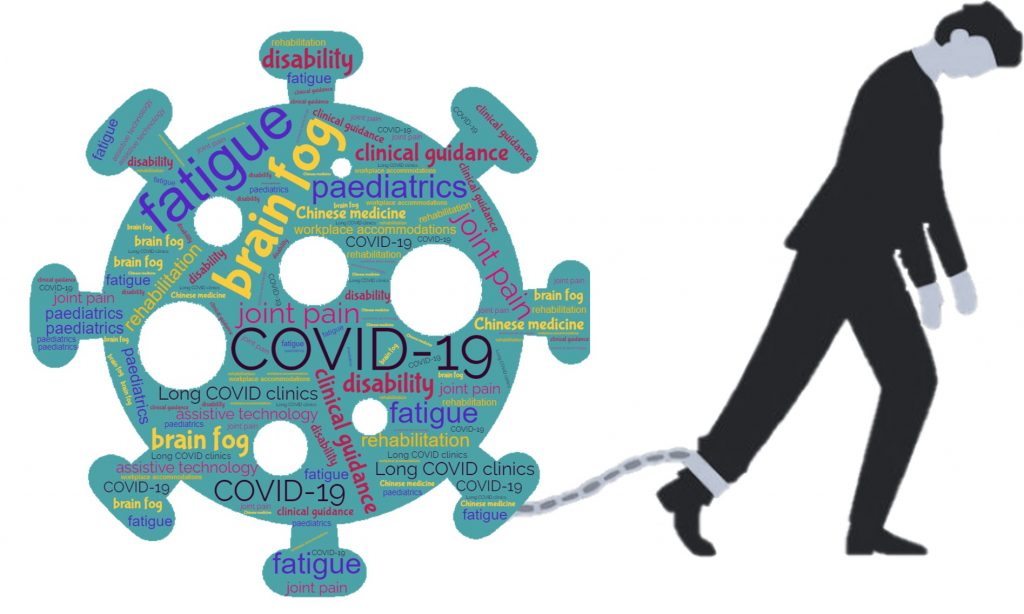As we move further away from the initial wave of the COVID-19 pandemic, the lasting repercussions of the virus are becoming increasingly apparent, particularly for those suffering from long COVID. This condition affects a significant portion of the population, leaving patients with debilitating symptoms that hinder their daily lives and ability to work. In this article, we will explore the multifaceted struggles of long COVID patients, their resilience in coping with the aftermath of the virus, and the need for significant improvement in care and treatment.
Understanding Long COVID
Long COVID refers to a range of symptoms that persist long after the initial COVID-19 infection has resolved. Symptoms reported by patients include chronic fatigue, brain fog, respiratory issues, and muscular pain. According to the Centers for Disease Control and Prevention (CDC), approximately 18 million Americans reported experiencing long COVID symptoms in 2022. Furthermore, studies show that approximately 18% of those infected with the virus may develop long-lasting symptoms.
Real Stories: Patients in the Eye of the Storm
Patients such as Jason Rissman, a special agent with the U.S. Department of Homeland Security, demonstrate the profound impact of long COVID. After spending 70 days in a coma during his initial infection in December 2020, Rissman continues to battle against the remnants of the virus. “I text my wife, I said, ‘I’ve gotta go to sleep, for a while. I love you. I’ll talk to you when I wake up,’” he recalls, reminiscing about his experience.
Another inspiring story comes from Shannon Jones, a first-grade teacher in Wisconsin. After contracting COVID-19 in 2022, Jones has faced the ongoing challenges of chronic fatigue and other symptoms that have complicated her return to work. “I never realized how important my breathing was in presenting and projecting information to my students,” Jones explains.
These narratives highlight the intertwining issues of recovery and the healthcare system’s support mechanisms that remain inadequate for many patients struggling with the aftereffects of COVID.
The Healthcare System’s Response to Long COVID
Despite ongoing struggles, the healthcare system has been slow to respond effectively. Many patients report difficulty in securing adequate care or even a proper diagnosis. For example, La Mesa Rehab has reported treating over 120 long COVID patients, yet no standardized treatment protocol exists, leading to a disjointed approach to care.
In a recent survey involving NHS patients with myalgic encephalomyelitis (ME) and long COVID, researchers found that low satisfaction rates of just 14.4% for long COVID patients underscore the healthcare system’s inadequacies. Many patients expressed frustration with lengthy diagnostic processes and a lack of effective support.
Barriers to Adequate Treatment
Long COVID patients often face stringencies that hinder their access to necessary treatments. This includes financial barriers and issues with insurance. Dr. Allen Lee, who contracted COVID-19 in 2022, shares his experience of navigating insurance after his claims were denied; the resulting bill went to collections, showcasing the burden that administrative issues can place on patients already struggling with their health.
Healthcare policies have also changed, particularly in California, where a recent expiration of a crucial bill now requires workers to prove they contracted the virus in the workplace to receive workers’ compensation. This puts additional pressure on patients who are already battling their health issues.
The Emotional Toll of Long COVID
Beyond the physical health implications, the impact of long COVID on mental well-being is pronounced. Patients like Deborah Franklin have described their emotional struggles poignantly: “I have like three different kinds of inhalers for my cough. It’s so aggressive that I can’t take it.” The psychological weight of chronic illness can induce feelings of isolation and helplessness, further complicated by navigating a healthcare system that often feels indifferent.
Resilience and Support Networks
However, resilience remains a core aspect of the patient experience. Many long COVID patients are participating in rehabilitation programs designed to help them manage their symptoms better. Programs like the one offered at SSM Health St. Mary’s Hospital in Wisconsin have shown promising outcomes, providing patients with tailored physical rehabilitation blending educational support with exercise regimens. As Shannon Jones put it, this dedicated care helps bridge the gulf between her former active self and her present, more constrained life.
The Call for Systematic Change
As we reflect on the challenges facing long COVID patients, it becomes clear that systemic changes are needed. Calls for improved access to specialized care and comprehensive diagnostic services are becoming louder. The combination of the delayed diagnosis patterns observed in patients with ME/CFS and long COVID indicates an urgent need for health professionals to be educated to better identify and treat these conditions.
Digital health solutions are also being explored as a way to enhance patient experiences and facilitate timely diagnosis. Enhancing communication between patients and healthcare providers can pave the way for more coordinated care that aligns with NICE guidelines.
Conclusion: Moving Beyond the Pandemic
In conclusion, the journey of long COVID patients is a testament to human resilience in the face of adversity. Their stories highlight the critical need for a healthcare system that doesn’t merely react but takes proactive, communicative, and compassionate action. By educating healthcare providers, enhancing mental health support services, and ensuring streamlined access to care, we can make strides in improving the lives of those affected by long COVID. As patients continue to seek answers and recovery, our collective understanding of this condition and its implications must evolve to meet their needs. The urgency to advocate for better care and treatment for long COVID is not just a call to action for patients, but for society as a whole.

